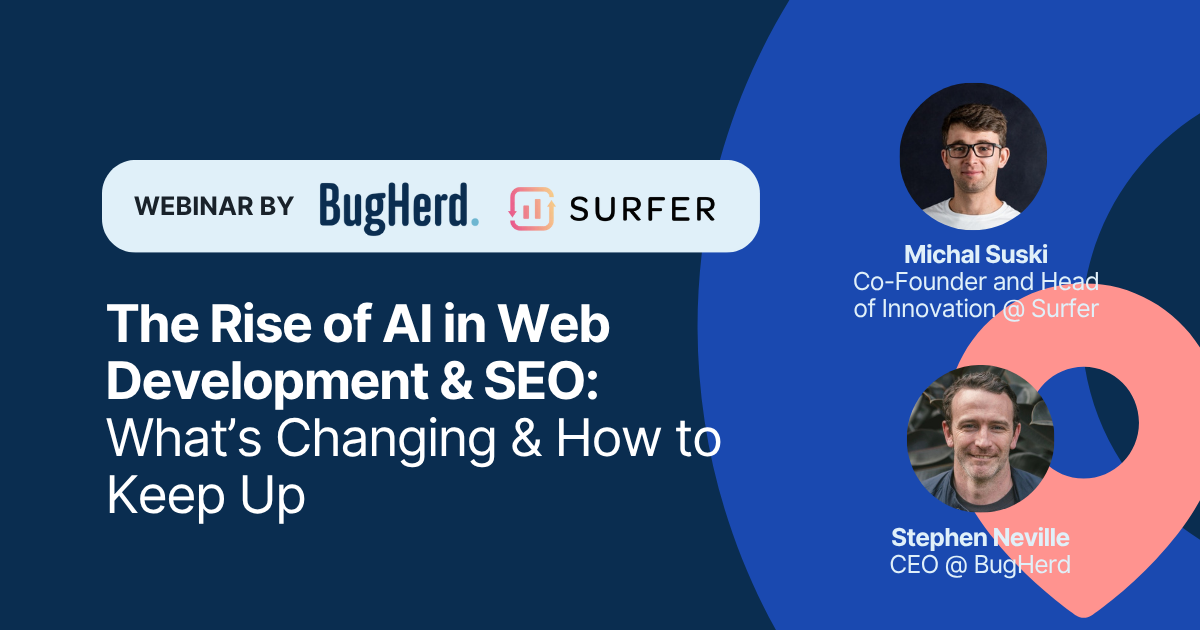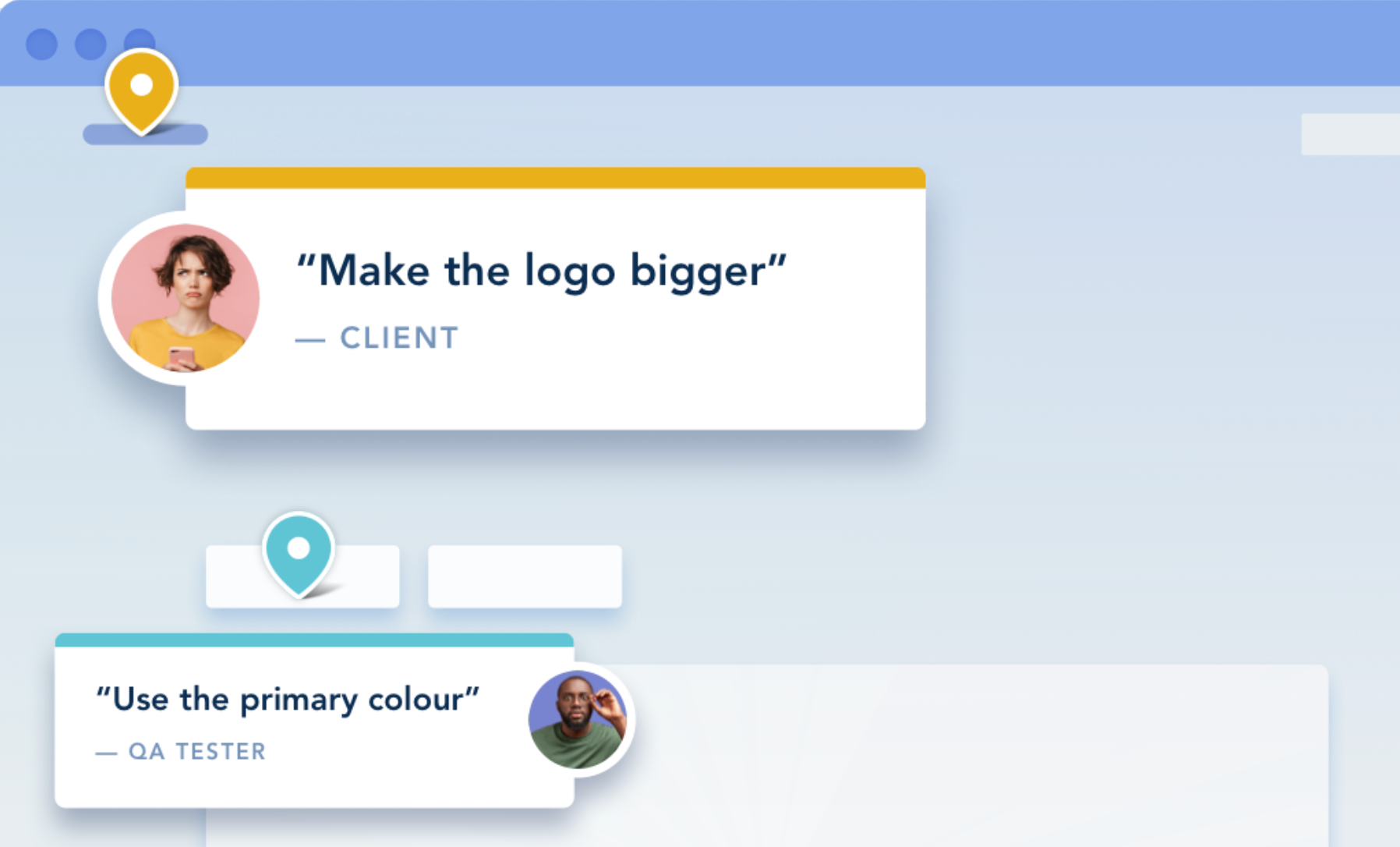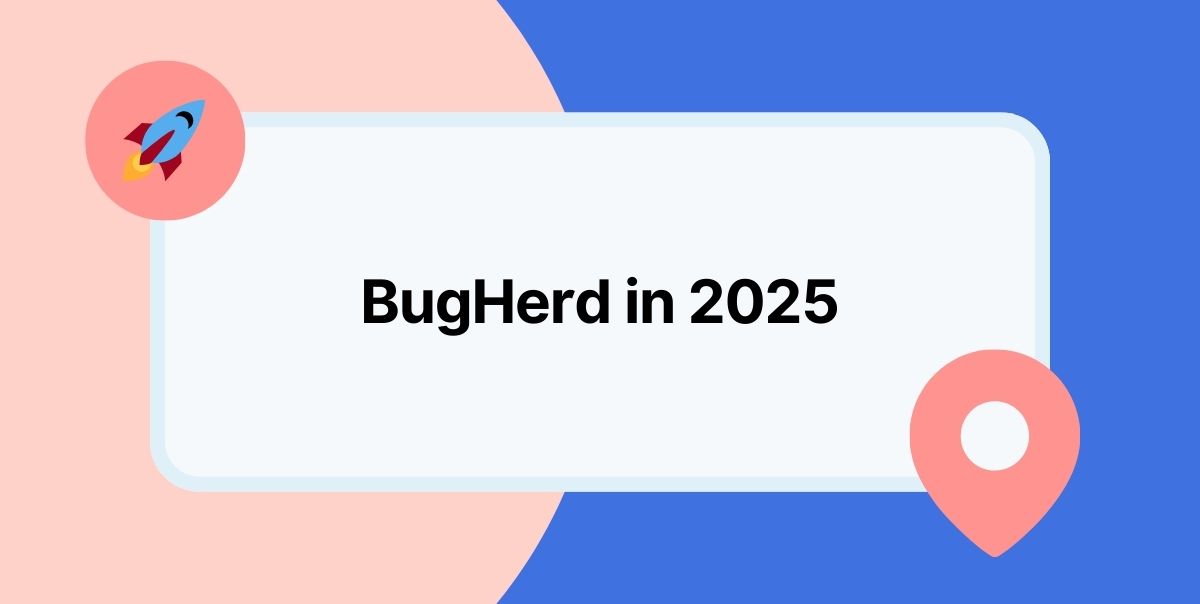The Biggest Shift: Speed is Now a Competitive Advantage
“The biggest change? The pace of change itself.” — Michal Suski, Surfer
AI integration is the backbone of modern web development and SEO strategy. The technology isn't just changing individual processes, it's reshaping the entire digital landscape at a pace that even seasoned professionals find challenging to match. The biggest transformation agencies face today is the speed of change itself, creating opportunities for those who can adapt quickly while leaving others struggling to keep up.
The shift from traditional methods to AI-powered workflows represents a fundamental change in how we allocate time and resources. Previously, professionals spent 90% of their time on repetitive tasks and only 10% on creative innovation. AI tools now automate these tedious elements, enabling teams to reverse this ratio and focus primarily on strategic thinking and creative problem-solving.
This transformation affects everything from content creation to code development, but success requires understanding both the capabilities and limitations of AI tools. Without proper domain knowledge, AI becomes a ‘yes-man’ that validates poor decisions rather than improving outcomes.
The winners will be the teams that learn to adapt fast. The losers? Those stuck waiting for a playbook that’s already outdated.
Where AI Shines: Tasks You Should Automate Today
AI tools are best used to eliminate repetitive work, freeing up your team to focus on creative and strategic tasks.
Selecting appropriate AI tools is crucial for creating workflows that enhance rather than hinder productivity. The key is starting with simple, low-stakes tasks before attempting complex implementations. This approach helps teams understand AI thinking patterns, identify blind spots, and recognize where tools excel versus where they struggle.
Use AI for:
- Content research & summarization (eg. ChatGPT, Claude, Perplexity)
- Initial draft creation (eg. ChatGPT, Claude, Surfer)
- Code prototyping & POCs (eg. Cursor, GitHub Copilot)
- Semantic analysis for SEO (eg. Surfer)
- Competitor research & content gap analysis (eg. Surfer, ChatGPT, Perplexity)
Start small. Have AI help you write an email or summarize a blog. Learn its strengths and blind spots before diving into complex tasks.
AI in Web Development
AI coding assistants like Cursor, GitHub Copilot, and Codeium are becoming essential tools for developers, especially in the early stages of a project. These tools excel at rapid prototyping, boilerplate generation, and exploring proof-of-concept ideas, allowing teams to validate functionality before investing heavily in full development cycles. However, they work best with common programming languages and struggle with niche technologies.
The key is to use them as co-pilots, helping you move faster without compromising quality or intent, and enabling you to make informed decisions about full-scale implementation.
They’re particularly useful for:
- Building quick UI mockups or layout scaffolds
- Generating REST APIs or form logic
- Refactoring legacy code
- Writing tests based on existing functions or edge cases
- Translating pseudocode or feature requests into functional snippets
Pro-tip: Always review AI-generated code for security, performance, and maintainability before merging into production branches.
Crafting Quality AI-Enhanced Content
“The goal is creating coherent, authentic content that reflects genuine expertise rather than generic AI output.” - Michal Suski, Surfer
High-quality, AI-enhanced content requires balancing efficiency gains with maintaining authenticity and accuracy. The cornerstone of successful AI content lies in proper humanization, not just avoiding detection, but creating genuinely valuable material that serves both human readers and search algorithms.
Effective humanization goes beyond simple rewriting. It involves training models on specific writing styles, maintaining consistent brand voice, and ensuring factual accuracy throughout the content creation process. The goal is creating coherent, authentic content that reflects genuine expertise rather than generic AI output.
Content strategy and optimization
Modern SEO isn’t just about ranking on Google; it’s about showing up in AI-powered platforms like ChatGPT, Perplexity, and Google's AI Overviews.
To win in this hybrid environment, your content must serve two audiences:
- AI systems: Want dense, structured, fact-based content
- Human readers: Want engaging, relatable, well-paced content
The most effective approach involves creating content that satisfies both audiences through strategic structuring. Lead with clear, factual answers in the first 50-100 words, then expand with context and supporting information that maintains human engagement.
For example:
What is visual website feedback?
Visual website feedback is a method of collecting comments and bug reports directly on a live website interface.
Maintaining quality standards in AI content production
Quality assurance becomes critical when scaling AI content production. Implement systematic fact-checking processes, especially for numerical data and citations. Use retrieval-augmented generation (RAG) techniques to improve accuracy rates from 10% to 90% for factual content.
Regular quality audits help identify common AI patterns that may signal automated content creation. Focus on eliminating generic phrases, ensuring natural keyword integration, and maintaining authentic voice throughout all content pieces.
Implementation Techniques When Using AI for Content Generation
Successful AI implementation involves understanding where AI adds value versus where human expertise remains irreplaceable.
1. Start with clear-impact tasks
Focus first on content analysis and optimization tasks that offer measurable improvements:
- Identify missing entities and semantic gaps
- Analyze competitor content structures
- Suggest improvements based on current ranking factors
- Provide SEO-friendly outlines and headings
These applications deliver immediate value and help teams build confidence with AI tools.
2. Workflow integration
Integrate AI into your workflow gradually - don’t overhaul everything at once.
- Phase 1: Start with research and initial draft generation
- Phase 2: Introduce AI for optimization tasks (like SEO scoring, tone adjustment, etc.)
- Phase 3: Layer in AI-assisted QA, summaries, or translation as needed
Define clear handoff points between AI and human input:
- Fact-checking and source validation
- Brand voice and tone review
- Strategic messaging and positioning checks
3. Content structuring for dual optimization
To make content work for both AI systems and human readers:
- Use hierarchical headings (H1 → H2 → H3) that move from broad to specific
- Break up content with bullet points, tables, and lists for easy scanning
- Include summary sections or key takeaways at the top or bottom
- Add FAQ sections to target featured snippets and AI Overviews
- Ensure consistent use of structured data (where applicable) for better indexing
Building Sustainable Workflows
Sustainable AI integration requires balancing automation with human oversight to maintain quality and strategic direction. The most successful approaches involve using AI to handle data processing and initial content creation while preserving human judgment for strategic decisions and final quality control.
Develop systems for regular content auditing and optimization. Existing content often represents untapped opportunities for improvement through AI-powered analysis and optimization. Rather than focusing solely on new content creation, systematically review and enhance existing materials that already demonstrate ranking potential.
Scaling content operations
Scale content operations by identifying repeatable processes that benefit from AI automation. Focus on content analysis, competitor research, and initial draft creation while maintaining human oversight for strategy, brand alignment, and final quality assurance.
Implement feedback loops that help improve AI outputs over time. Track which AI-generated content performs best and use these insights to refine prompts and processes for better results.
Future-proofing strategies
Prepare for continued evolution in AI capabilities and search algorithms by building flexible workflows that can adapt to new tools and requirements. Focus on developing team skills in AI prompt engineering, content strategy, and quality assessment rather than relying on specific tools that may change.
Monitor emerging platforms and ranking factors to stay ahead of industry shifts. The landscape continues evolving rapidly, requiring ongoing adaptation and learning.
Monitoring and Adaptation
Regular monitoring ensures AI-enhanced content maintains performance and relevance over time. Search algorithms and AI platforms continuously evolve, requiring ongoing optimization to maintain visibility and effectiveness.
Track performance across multiple platforms, including traditional search engines and AI-powered systems like ChatGPT and Perplexity. Different platforms may favor different content characteristics, requiring tailored optimization approaches.
- Performance Tracking
Use analytics tools to monitor content performance across various channels. Track not just traffic volume but engagement quality, conversion rates, and user satisfaction metrics. AI-sourced traffic often shows higher conversion rates due to pre-qualified user intent.
Implement systematic content refresh schedules based on performance data rather than arbitrary timelines. Focus optimization efforts on content showing ranking improvements or increased visibility to maximize return on investment.
- Continuous Improvement
Establish processes for identifying and addressing content gaps revealed through AI analysis. Regular competitor analysis using AI tools can reveal new optimization opportunities and emerging trends that inform content strategy.
Stay current with platform updates and algorithm changes that affect content performance. The rapid pace of change requires proactive monitoring and quick adaptation to maintain competitive advantages.
Start with content analysis and optimization tasks that have clear success metrics.
AI excels at identifying missing entities, analyzing competitor content, and suggesting structural improvements based on current ranking factors. These applications provide immediate value while building team confidence with AI tools.
Avoiding Common AI Pitfalls
Avoiding common AI mistakes is vital for maintaining content quality and achieving sustainable results. The most frequent errors involve over-relying on AI for complex tasks, failing to maintain domain expertise, and attempting to scale too quickly without proper quality controls.
Keyword stuffing remains problematic, but AI can inadvertently create new forms of content issues like repetitive phrasing patterns or generic expressions that signal automated generation. Focus on natural language integration and authentic voice maintenance.
Balancing automation and expertise
Maintain domain expertise even as AI tools handle routine tasks. Without foundational knowledge, teams cannot effectively evaluate AI outputs or make strategic decisions about content direction and optimization priorities.
Avoid the temptation to automate entire workflows without human oversight checkpoints. The most successful implementations preserve human judgment for strategic decisions while leveraging AI for efficiency gains.
Quality over quantity
Prioritize content quality over volume, especially when scaling AI-assisted production. High-quality, well-optimized content consistently outperforms large volumes of mediocre material in both search rankings and user engagement.
Focus optimization efforts on existing content that shows potential rather than constantly creating new material. Many organizations have significant untapped value in their current content libraries that can be enhanced through AI-powered analysis and optimization.
Quick AI Wins You Can Try Today
- Audit your latest blog post in ChatGPT
Ask what it’s missing based on top-ranking content - Review existing content
Refresh pages that haven’t been touched in 3+ months - Systematize content optimization
Use tools like Surfer to automate SEO recommendations - Start small
Use AI to draft emails, brainstorm blog outlines, or build low-stakes code snippets
In Summary
AI is here to stay, but human expertise still leads strategy. Mastering AI integration in web development and SEO requires a strategic approach that balances automation with human expertise. Success begins with understanding AI's impact on traditional workflows and choosing appropriate tools for specific tasks. Crafting quality AI-enhanced content involves proper humanization techniques and dual optimization for both human readers and AI systems.
Effective implementation starts with simple tasks and gradually scales to more complex workflows while maintaining quality standards. Building sustainable processes requires systematic content optimization, regular performance monitoring, and continuous adaptation to evolving platforms and algorithms.
The key to long-term success lies in avoiding common pitfalls like over-automation, maintaining domain expertise, and prioritizing quality over quantity. Teams that master these principles while staying current with rapid industry changes will maintain competitive advantages in an increasingly AI-driven landscape. By following these strategies, organizations can leverage AI tools to enhance productivity and effectiveness while preserving the strategic thinking and creative problem-solving that drive exceptional results.
Catch the full webinar replay with Michal Suski and Stephen Neville. It’s a very insightful conversation with great questions from the audience.
Frequently Asked Questions
Why is domain expertise still important when using AI tools?
Domain expertise is crucial because AI tools can become "yes-men" without proper human oversight, validating poor decisions rather than improving outcomes. Understanding fundamentals allows professionals to critically evaluate AI outputs and make strategic decisions.
How should teams start implementing AI in their workflows?
Start with simple, low-stakes tasks to understand AI thinking patterns and limitations before attempting complex implementations. This approach builds confidence and reveals where tools excel versus where they struggle.
What separates winning content in an AI-first SEO environment?
Winning content balances optimization for both human readers and AI systems through structured, fact-dense information presented in the first 50-100 words, followed by engaging context that maintains human interest and readability.
How often should AI-generated content be updated?
Content should be updated based on performance data rather than arbitrary schedules. Focus on refreshing content that shows ranking improvements or increased visibility to maximize optimization impact.
What are the biggest mistakes to avoid with AI content creation?
Avoid over-relying on AI for complex tasks, attempting to scale too quickly without quality controls, and creating content without proper fact-checking and domain expertise oversight.

















But don't just take our word for it.
BugHerd is loved by 10,000+ companies,
350,000+ users across 172 countries.
4.8/5
4.7/5
4.5/5
5/5
8.7/10
Sam Duncan 📱📏 🌱
@SamWPaquet
"@bugherd where have you been all my life??
We just migrated our bug tracking over from Asana and have at least halved our software testing time🪳👏📈. "
Ashley Groenveld
Project Manager
“I use BugHerd all day every day. It has sped up our implementation tenfold.”
Sasha Shevelev
Webcoda Co-founder
"Before Bugherd, clients would try to send screenshots with scribbles we couldn't decipher or dozens of emails with issues we were often unable to recreate."
Mark B
Developer
“A no-brainer purchase for any agency or development team.”
Kate L
Director of Operations
"Vital tool for our digital marketing agency.”
Paul Tegall
Delivery Manager
"Loving BugHerd! It's making collecting feedback from non-tech users so much easier."
Daniel Billingham
Senior Product Designer
“The ideal feedback and collaboration tool that supports the needs of clients, designers, project managers, and developers.”
Chris S
CEO & Creative Director
“Our clients LOVE it”
Emily VonSydow
Web Development Director
“BugHerd probably saves us
at least 3-4hrs per week.”